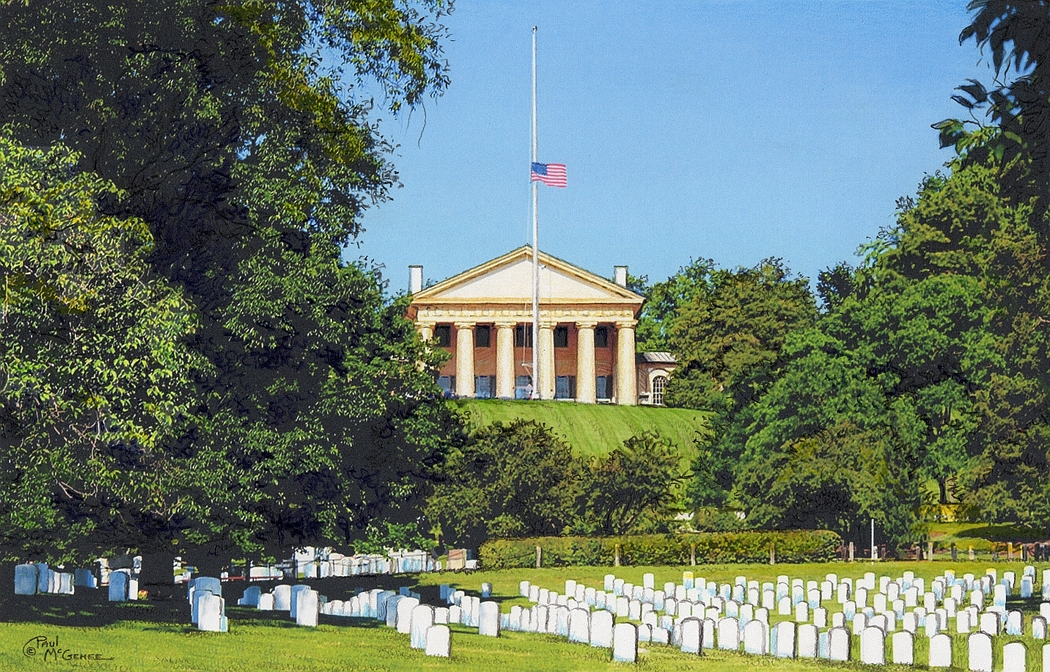|
"Arlington
National Cemetery" by Paul McGehee. The final resting place of our
Nation's heroes. The estate of Robert E. Lee known as "Arlington House"
was a working plantation situated upon a prominent hill overlooking the
Nation's Capital, Washington, DC. When Civil War broke out in 1861, its
strategic importance saw the Confederate Virginia Militia occupy the
grounds just a few days after Lee himself left to command the Southern
forces. However, within a month it was to be an early acquisition by
Union troops. The first three years of the war saw battles which
incurred heavy casualties amongst the Union forces, whose remains soon
filled the available cemeteries around the Nation's Capital.
Quartermaster General Montgomery C. Meigs was given the task of
assessing different locations for large new national cemetery. It was
decided that the grounds of Arlington House would be well-suited for
such a purpose. The enormous statement that would be made by burying
the Union war dead in the gardens of General Lee's house did not escape
Meigs either, as he knew that it would make it so Robert E. Lee could
never again return to his beloved estate. In 1864 the fallen from the
"Wilderness Campaign" were among the first to be buried in the grounds
of Arlington, most of which had then been designated by the Army for
grave sites. The southernmost portion of the Arlington estate was
originally used both during and after the Civil War as a settlement for
over 1,000 freed slaves. They lived there and farmed their crops at
Freedman's Village until eviction in 1888 when the government
designated the area as a military installation. In the years to come,
Arlington National Cemetery became the final resting place for soldiers
and family members of veterans of several wars and numerous conflicts,
as well as politicians, Presidents, and those who gave their lives in
the war on terror. One of the most popular sites on the grounds is the
Eternal Flame which marks the grave of President John F. Kennedy.
Arlington House, now known as the Custis-Lee Mansion or the Robert E.
Lee Memorial, presides over the graves like a stately guardian from
days gone by. The former mansion lowers its flag to half-staff during
the daily interments, some of which are accompanied by magnificent
fly-overs of aircraft in the poignant "missing man" formation. The
Cemetery celebrated its 150th anniversary in 2014. It is truly hallowed
ground. "Arlington National Cemetery" is faithfully reproduced as an
archival-quality print from McGehee's original color pencil drawing,
each hand-signed by the artist. A limited edition of only 500 pieces.
|


